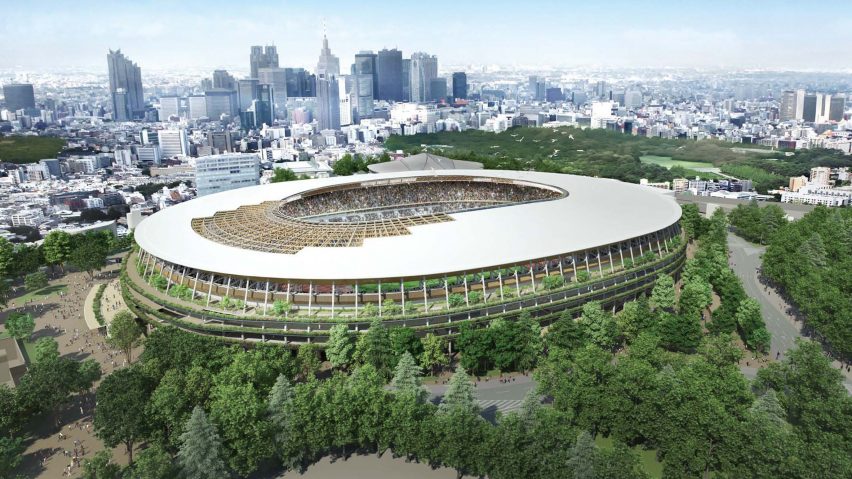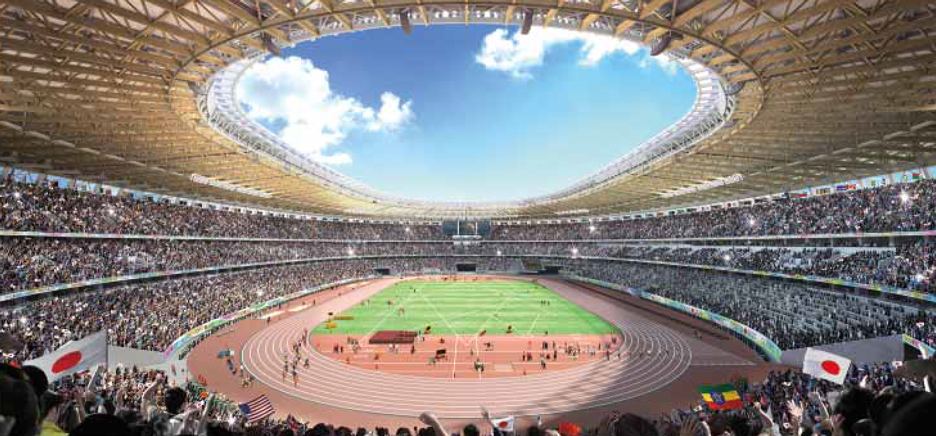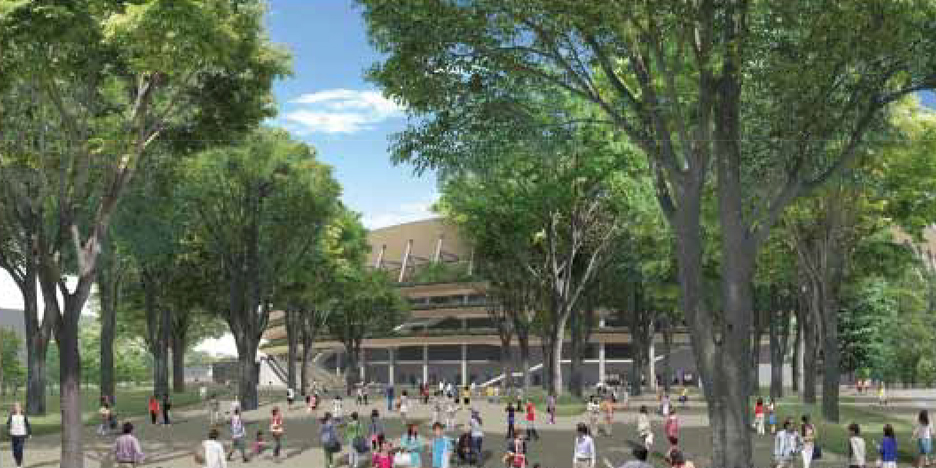
Construction work starts on Kengo Kuma's Tokyo 2020 Olympics stadium
Building work has begun on Kengo Kuma's National Stadium for the Tokyo 2020 Olympics – the design that was controversially selected to replace Zaha Hadid's competition-winning scheme.
A ground-breaking ceremony for the latticed timber stadium was held on 11 December 2016.
The ¥149 billion (£1.1 billion) structure is expected to complete in three and a half years' time to host the Tokyo 2020 Olympics.

Japanese architect Kengo Kuma designed the building as an oval structure with a huge oculus above the track.
Seating stands will be sheltered below the latticed larch and steel canopy, and circulation areas around the edge of each level will feature plants and trees, to respect the surrounding park.

Kuma's design was selected in an anonymous competition after the Japanese prime minister scrapped plans for a stadium designed by the late British-Iraqi architect Zaha Hadid in 2015.
Escalating costs were cited as the primary reason for abandoning Hadid's design, which was expected to complete in 2018.
Kengo Kuma and Toyo Ito, who was also in the running to design the stadium, were among a group of eminent Japanese architects that protested against Hadid's proposal. They argued that its scale was not befitting of the setting – a wooded site beside Kenzo Tange's iconic 1964 Olympic stadium.

The stadium redesign has not been the only hiccup in the planning for the Tokyo 2020 Olympics, with organisers having to host a second competition for the games' logo amid after its original choice was accused of plagiarism.
The stadium debate attracted considerable attention in 2016, putting Kengo Kuma at number five on the inaugural Dezeen Hot List – a comprehensive list of the most talked about architects, designers and institutions of the year.